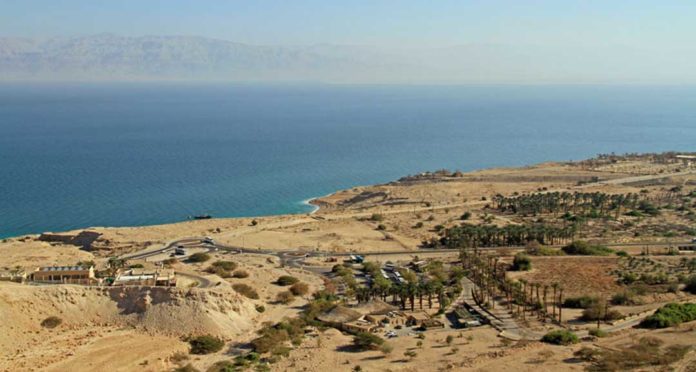According to a new preliminary study, a superheated impact from the skies destroyed urban areas and cultivating settlements north of the Dead Sea around 3,700 years ago.
Radiocarbon dating and unearthed minerals that in a split second solidified at high temperatures show that a massive airburst caused by a meteor that exploded in the atmosphere immediately destroyed human civilization.
The impact was high enough that it destroyed civilization in a 25 all kilometer-wide plain called Middle Ghor. Moreover, it pushed a bubbling brine of Dead Sea salts over once-fertile farmland.
Archaeologist Phillip Silvia said, “People did not return to the region for 600 to 700 years.”
“Excavations at five large Middle Ghor sites, in what’s now Jordan, indicate that all were continuously occupied for at least 2,500 years until a sudden, collective collapse toward the end of the Bronze Age.”
“Ground surveys have located 120 additional, smaller settlements in the region that the researchers suspect were also exposed to extreme, collapse-inducing heat and wind. An estimated 40,000 to 65,000 people inhabited Middle Ghor when the cosmic calamity hit.”
The most far-reaching proof of demolition caused by a low-altitude meteor blast originates from the Bronze Age city of Tall el-Hammam, where a group that incorporates Silvia has been uncovering throughout the previous 13 years. Radiocarbon dating demonstrates that the mud-brick walls of about all structures all of a sudden vanished around 3,700 years ago, leaving just stone establishments.
Moreover, the external layers of numerous pieces of pottery from same era hint at having melted into glass. Zircons crystals in those glassy coats shaped inside one moment at amazingly high temperatures, maybe as hot as the surface of the sun.
Silvia said, “High-force winds created tiny, spherical mineral grains that apparently rained down on Tall el-Hammam. We have identified these minuscule bits of rock on pottery fragments at the site.”
Examples exist of exploding space rocks that have wreaked havoc on Earth (SN: 5/13/17, p. 12). An apparent meteor blast over a sparsely populated Siberian region in 1908, known as the Tunguska event, killed no one but flattened 2,000 square kilometers of forest. And a meteor explosion over Chelyabinsk, Russia, in 2013 injured more than 1,600 people, mainly due to broken glass from windows that were blown out.
The findings reported at the annual meeting of the American Schools of Oriental Research on November 17.
